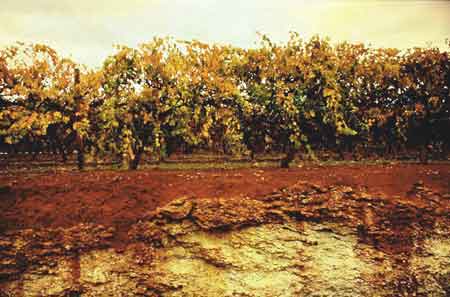
Know Your Terroir – Part I
Can you Name the Ten Most Famous Wine Regions from their Terroir?
Part I of this two part blog, focuses on the first five famous terroirs of the modern wine world
It is important for grape growers, winemakers and wine consumers to know the famous terroirs of the modern wine world. Review the following terroir descriptions [1 through 10] and try to name them.
Send your answers to russ@vintagetexas.com (email addresses will be witheld). Each correct answer will receive 10 points. BONUS: Five bonus points will be given to any responses that correctly name Texas locations with similar characteristics.
The correct answers and the top three winners will be posted on www.vintagetexas.com/blog.
Let the challenge begin…..
1. While the combination of sand, granite, schist and alluvial deposits are hardly unique to this region, these soils in conjunction with the high altitudes make for a unique grape growing environment. Grape growing begins at an altitude of 2,500 ft and continues in many places to over a 5,000 ft. Lots of sunshine, very cool nighttime temperatures and arid mountain conditions combine to provide a very long growing season for a variety of primarily red grapes, but regions are now being identified for white varietals, as well. The wines of this region are super-ripe and boast very high concentrations of resveratrol and other antioxidants due to the long hang time on the vine at high altitudes.
2. The visually arresting red earth occurs in a few places around the world, but this particular parcel of land is just 10 miles long and less than a mile wide and was a geological mystery until recently. The soil, which is literally red, was formed by a unique combination of events: Iron-rich red dirt was transported by mainly wind and deposited over porous limestone. The resulting soil is rich in iron and other minerals, drains very well, and provides a thin red layer over the limestone beneath. Many wineries have found this to be a wonderful growing environment for Cabernet Sauvignon.
3. Around foothills a mix of dark slate and quartzite that developed in Paleolithic times glitters in the sun from the high silica and mica crystal content. It is rocky, porous and free-draining which forces the roots to dig deep [reportedly to 25 meters in some cases] into the bedrock to find pockets of water and nutrients. Innovative winemakers from across the world have settled in this area today to take advantage of the unique combination of soil, climate and old vines of Syrah, Grenache and Carignan. The vineyards are steep and must be worked by hand.
4. This region is actually comprised of several different soil types including tufa [a soft, friable and porous calcite rock], volcanic soil, sandstone, and limestone clay. The soils and elevation combine to promote the cultivation of several grape varietals. Rocky, low-nutrient soils are perfect for Sangiovese, while some areas have more sand, clay and alluvial deposits, great locations for international varieties that are more recently used to blend with historical grape varieties that makes more intense red wines – A true case of east meets west; old world meets new!
5. The best vineyards in this region are covered with smooth, oval-shaped stones that were formed from the many centuries of floodwaters that poured through this famous river valley since the last Ice Age. The stones collect heat from the sun and then radiate the heat onto the vines during the night time. The wines are spicy, rich, full-bodied, mostly red wines and they are higher in alcohol than other red wines from this country. The wines are made from Syrah, Grenache and other varieties. Some of these vineyards are so rocky and inclined that they seem nearly impossible to cultivate.
Name these terroirs; post your answers in the comments area below.
——————————–
Coming Next – Know Your Terroir – Part II (The Best of the Bunch) to be posted on Monday, March 23, 2009.

Be the first to comment